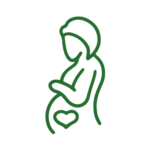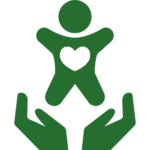WHAT IS IT?
Prostatitis is the name for swelling and inflammation of the prostate gland. It affects men of all ages, but it tends to be more common in men younger than age 50.
The condition may result in a number of reasons, including a bacterial infection, immune system disorder, nervous system disorder, or injury to the prostate. In many cases, the cause is never identified.
Bacterial prostatitis is often caused by common strains of bacteria. The infection may start when bacteria carried in urine leaks into your prostate. If bacteria aren’t eliminated, prostatitis may recur or become difficult to treat. This is called chronic bacterial prostatitis.
Depending on the cause, prostatitis may come on gradually or suddenly. It may get better quickly, either on its own or with treatment. Some types of prostatitis last for months or keep recurring (chronic prostatitis).
SYMPTOM CHECKER
Prostatitis symptoms vary depending on the cause. They may include:
- Pain or burning sensation when urinating
- Difficulty urinating, such as dribbling or hesitant urination
- Frequent urination, particularly at night
- An urgent need to urinate
- Pain in the abdomen, groin or lower back
- Pain in the area between the scrotum and rectum
- Pain or discomfort of the penis or testicles
- Painful orgasms (ejaculations)
- Flu-like symptoms (with bacterial prostatitis)
TREATMENT
A diagnosis of prostatitis involves ruling out other conditions that may be causing your symptoms. A digital rectal examination is generally performed to feel the gland. You also may need to undergo blood, urine, or bladder tests.
Treatment for prostatitis generally depends on the cause, if the cause is known. Options include medication, massage, and self-care.
Antibiotics. This is the most common treatment for prostatitis. The choice of medication is based on the type of bacteria that may be causing your infection. If you have severe symptoms, you may need intravenous (IV) antibiotics.
Alpha-blockers. These medications help relax the bladder neck and the muscle fibers where your prostate joins your bladder. This treatment may lessen symptoms, such as painful urination.
Anti-inflammatory agents. Nonsteroidal anti-inflammatory drugs (NSAIDs) may relieve painful symptoms.
Prostate massage. A doctor uses a procedure similar to a digital rectal exam to massage the prostate gland. This may provide some symptom relief, but doctors disagree on its effectiveness.
Self-care. The following steps may lessen symptoms:
- Soak in a warm bath (sitz bath).
- Limit or avoid alcohol, caffeine, and spicy or acidic foods.
- Avoid prolonged sitting, or sit on a pillow or inflatable cushion to ease pressure on the prostate gland.
- Avoid bicycling, or wear padded shorts and adjust your bicycle to relieve pressure on your prostate.
Excerpt From: The Mayo Clinic. “Mayo Clinic A to Z Health Guide”.






































































